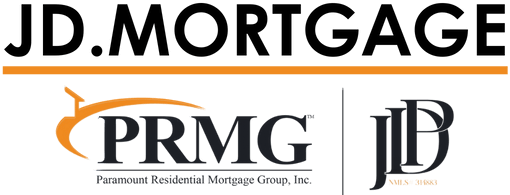Temporary Buydowns Explained
Understanding Temporary Buydowns (3/2/1, 2/1): Simple, Accurate Guide
Temporary buydowns lower the buyer’s monthly payment for the first one to three years, using prepaid funds set aside in escrow by a seller, builder, or sometimes a lender credit. The note rate never changes. The escrow simply covers part of the payment during the buydown period so the buyer pays less out of pocket early on. This guide explains how the money moves, why the payment steps up, and the real risks buyers and agents should plan for. Ask us to model a buydown for your scenario.
Explore Loan Options (Dec 7th, 2025)What a Temporary Buydown Really Is
A temporary buydown is a short-term payment subsidy. Funds are deposited into a dedicated buydown escrow at closing. Each month during the buydown period, that escrow covers the difference between the full note payment and the reduced payment the buyer makes. When the buydown period ends, the escrow is empty and the buyer pays the full note payment for the rest of the term.
Common Structures: 3/2/1, 2/1, 1/0
- 3/2/1: Year 1 is note rate minus 3%, Year 2 minus 2%, Year 3 minus 1%, then full note rate in Year 4+.
- 2/1: Year 1 is note rate minus 2%, Year 2 minus 1%, then full note rate in Year 3+.
- 1/0: Year 1 is note rate minus 1%, then full note rate afterward.
Step-by-Step: How the Money Flows
- At closing: Seller, builder, or other approved party funds the buydown escrow (based on pricing and the chosen structure).
- Each month during the buydown: The borrower pays the reduced amount. The servicer draws from the escrow to make the loan whole at the note rate.
- When the buydown ends: Payments “step up” to the full note payment for the remainder of the term.
- If you refinance or sell early: Any unused buydown escrow is applied to your loan as a principal curtailment at payoff. It is not a cash refund. Terms are defined in your closing package.
Important: Most programs qualify borrowers at the full note payment, not the reduced buydown amount. We’ll confirm program rules for your file. Ask us to verify qualifying math.
Buyer-Paid vs Seller/Builder-Paid
Buydowns are most often seller- or builder-funded as an incentive. They can sometimes be funded by lender credits or a buyer contribution, subject to program and concession limits. We structure the contract so the funds are properly earmarked for escrow and compliant with program guidelines. Have us structure your offer.
Explore Loan Options (Dec 7th, 2025)Temporary Buydown vs Discount Points
- Temporary Buydown: Short-term payment relief. The note rate is unchanged. Subsidy ends, payment steps up.
- Discount Points: Permanent rate reduction. Higher upfront cost; savings continue for the life of the loan.
Which fits better depends on your time horizon and cash plan. We’ll show both paths side-by-side. Request a comparison.
Real Risks People Don’t Discuss
- Step-up shock: Each new year of a 3/2/1 or 2/1 comes with a bigger payment. If no one prepared you, those jumps can stress the budget.
- The slogan problem: “Marry the house, date the rate” is not a strategy. If rates don’t fall, refinancing may not pencil out before the buydown ends.
- Exit timing: If you sell/refi early, you lose the future monthly relief. The remaining escrow is applied to your payoff as a principal curtailment, but you don’t get a check back.
- Qualification reality: You’re typically qualified at the full note payment. Don’t build a budget on the reduced payment alone.
Quick Example: 2/1 Buydown
Note rate 6.5% on a fixed loan. With a 2/1 buydown:
- Year 1: payment calculated as if 4.5%
- Year 2: payment calculated as if 5.5%
- Year 3+: payment at the full 6.5% note rate
The escrow covers the “as if” gap so the lender still receives the full 6.5% payment each month.
Explore Loan Options (Dec 7th, 2025)FAQs: Temporary Buydowns
Who usually funds a temporary buydown?
Often the seller or builder as a negotiated incentive. Lender credits or buyer funds may be allowed within program limits. We’ll check your program rules.
Does a buydown change my interest rate?
No. The note rate never changes. The escrow simply lowers your out-of-pocket payment during the buydown period.
What happens if I refinance or sell before the buydown ends?
Any unused buydown escrow is applied as a principal curtailment at payoff. It’s not a cash refund.
Explore Loan Options (Dec 7th, 2025)Will I qualify based on the reduced payment?
Usually no. Most programs qualify at the full note payment.
Is a buydown better than paying discount points?
Buydowns are short-term payment relief; points are a permanent rate cut. If you plan to keep the loan long enough, points may win. If you need early-year relief, a temporary buydown can help.
What This Means for You
Temporary buydowns can make the first years easier, but they’re not magic. Plan for each step-up, don’t rely on a future refinance to save the day, and make sure the escrow mechanics are set up correctly at closing. We’ll map the timelines, stress-test the payment jumps, and document what happens if you exit early—so nothing about your cash flow is a surprise. Back to top.
Programs we offer: VA, FHA, USDA, DPA, Conventional, Jumbo, Non-QM (DSCR, Bank Statement, ITIN), HELOC, Second Mortgages, Reverse, Construction. Contact our team.
Learn More About VA Loans (Dec 7th, 2025)

Comments open